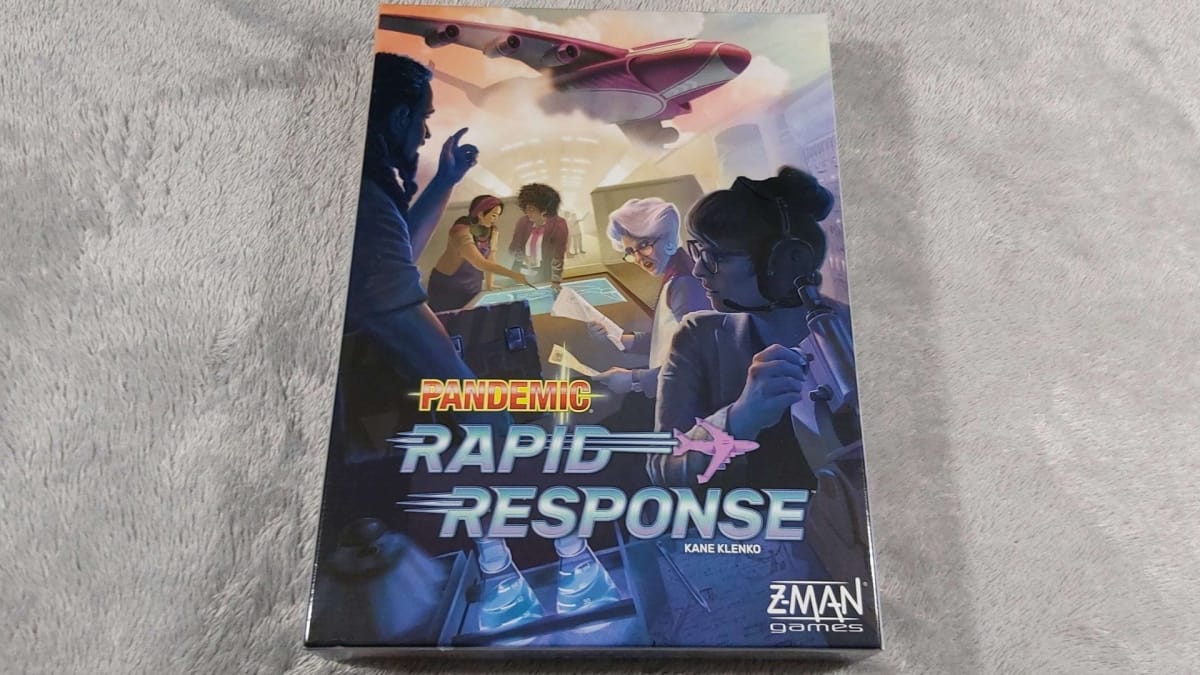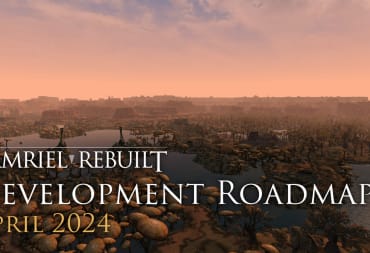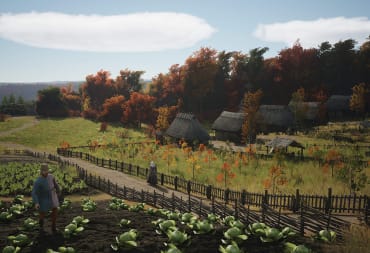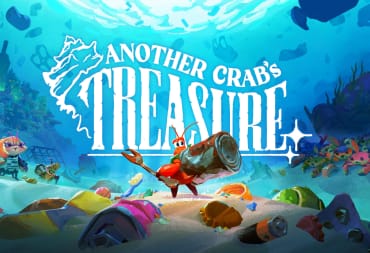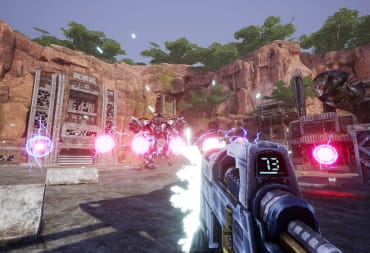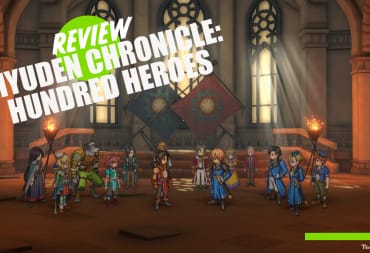We clearly have some sort of obsession with viral contagions. We've made movies about them, we've written stories about them, and of course, we've made games about them. One of the most popular series' in this particular genre is Pandemic. The Pandemic series has had many iterations over the past few years. From the original base game to the legacy versions, each of them has provided a complex backdrop for players to fight off viral disasters that threatened the world. Unfortunately, each of these games has a playtime of over 2 hours minimum. Obviously, this isn't exactly great for the busy pace of modern life. Z-Man Games have attempted to fix that issue, with Pandemic: Rapid Response, a fast-paced game set in the Pandemic universe.
Pandemic: Rapid Response condenses the experience of playing a Pandemic game into a much shorter time frame. In fact, the pace of the game is quite insanely hectic. Players must do their best to supply infected countries with the supplies they need to fight off the plague before it can destroy the world. The players achieve this by crafting supplies on a medical plane and then dropping those supplies on the different cities which demand them. The entire time that players are doing this, they are fighting against the clock, as more and more cities become infected.
As you can probably tell from the description, Pandemic: Rapid Response is quite a stressful experience. In an effort to force players to move as quickly as possible with there turns, the game comes with an hourglass. As you play through the game you must keep turning the hourglass, removing time counters and adding newly infected cities. There are only two possible outcomes. Either the players work together quickly enough to cure all infected cities before the timer runs out, or the world becomes overrun with a dangerous plague.
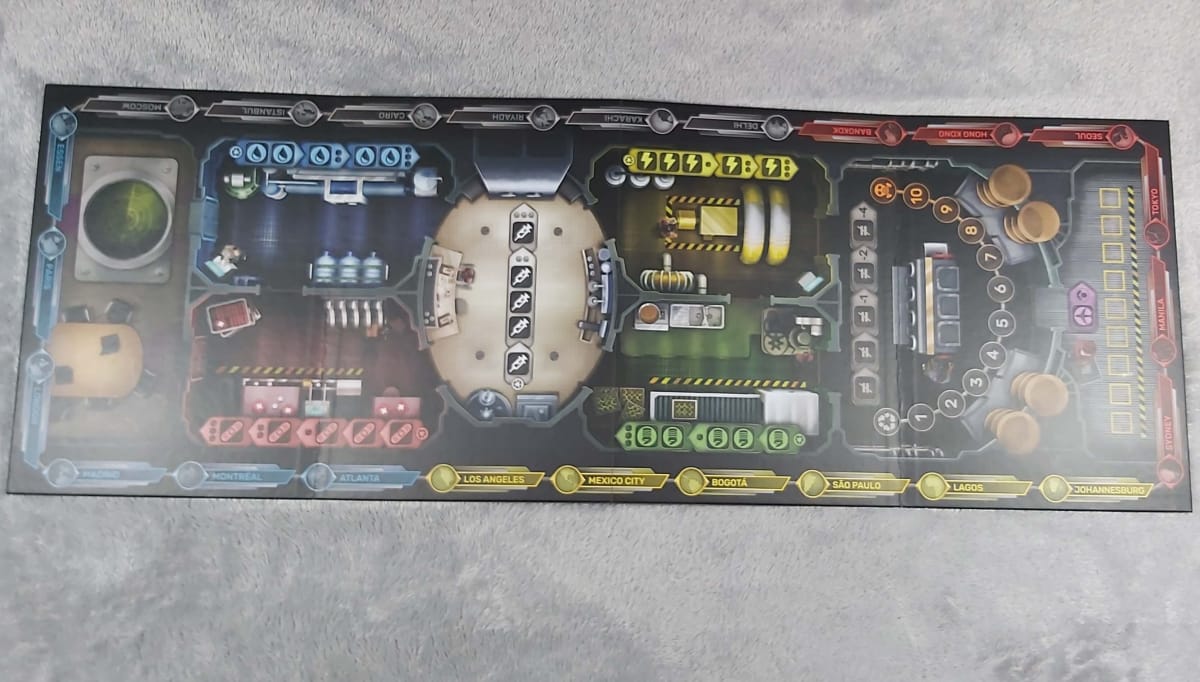
Now, just because Pandemic: Rapid Response is stressful doesn't make it bad. Far from it. It does certainly provide an alternative for people who want the experience of playing a Pandemic game, but who might not have the free time to devote hours to doing so. Instead of a game with difficulty based around making the right decisions, Rapid Response mainly derives difficulty from tight time constraints. If all players do not fully understand the rules or are too slow choosing what to do, then they are destined to fail. The main issue that arises from this, is that your first few games are likely to result in failure.
Part of the issue that a game with such tight time constraints comes with, is that learning the ropes isn't exactly easy. The rules are relatively simple and laid out in an easy-to-understand way, but you don't have much time to practice them before you're expected to perform well. Obviously, how much of an issue this is will depend on the person, but it's hard not to imagine some people getting turned off to the game when they lose their first few times playing the game. It does have a tendency to make the player feel like there's not much chance of winning.
Mechanically Pandemic: Rapid Response is mainly based around dice rolls. Each player has a pool of 6 dice. At the start of their turn, they roll them and then spend those dice to perform certain actions. Moving around the plane, flying the plane to different cities, creating or dropping supplies are all done through the spending of dice. These different dice must be assigned to rooms before the room can be activated to generate supplies. As such players must work together and agree on goals to ensure that enough of the correct type of dice can be assigned to each room.
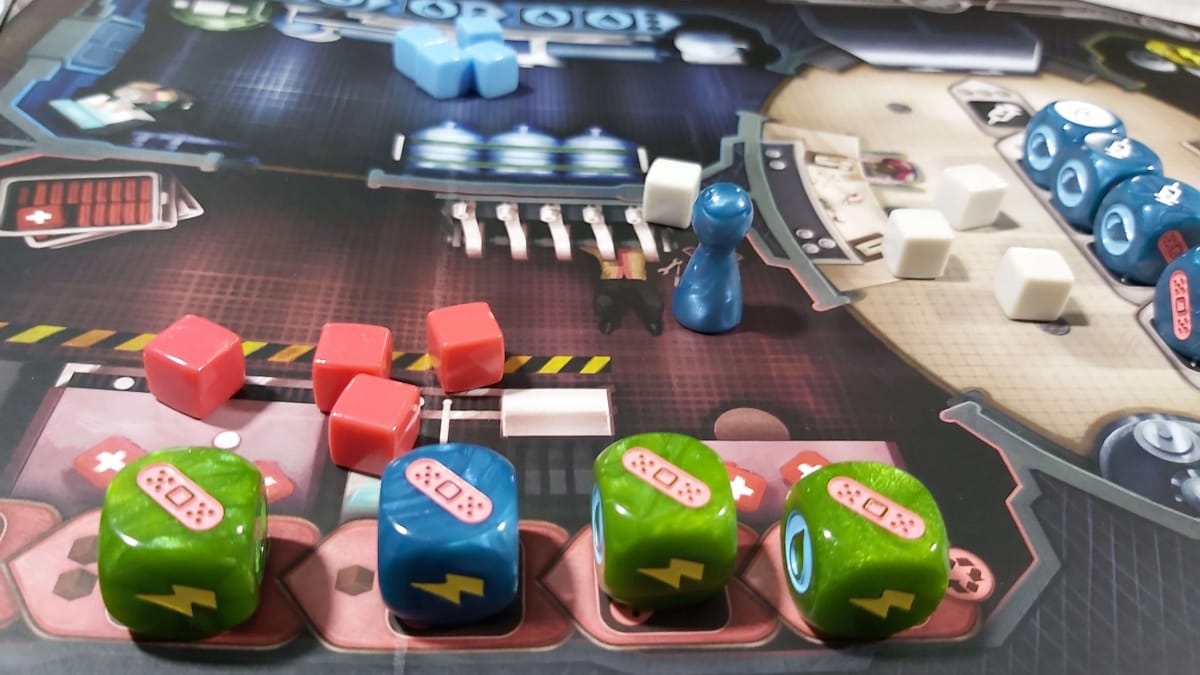
The main reason that co-operation is so important, is that players will need to assign specific numbers of dice at a time. For example, the power room is divided into 3 segments, each of which provides different numbers of power cubes to drop on needy cities. To place any dice down at all, you must be able to place 3 dice at once. This then means that until the room is activated, at least one player will be missing half of their dice. Obviously, this means that players have to be very careful about where they place their dice.
The fact that you are forced to play a certain number of dice at a time is a large part of the game's challenge. In fact, playing without the need to allocate dice in specific numbers makes the game much, much easier, since players can pass turns to-and-fro until enough dice are generated for any goal. Allowing large numbers of your dice to be tied up in a room, waiting for someone else to have enough dice of their own to assign, can make your turn almost useless. It's all well and good rolling in hopes of getting the one symbol you need, but when you've got 5 of your 6 dice tied up, the chances are drastically reduced.
Another factor in Pandemic: Rapid Response is dealing with your waste. While you're working against the clock, you are also generating waste products whenever you create supplies. If this waste gets too high, it's game over. This basically means that players have to keep watching those waste levels, and possibly they'll have to allocate precious resources to clearing the waste before it becomes dangerous. This, in turn, adds even more to the tension created by having a constantly running timer going on in the background.
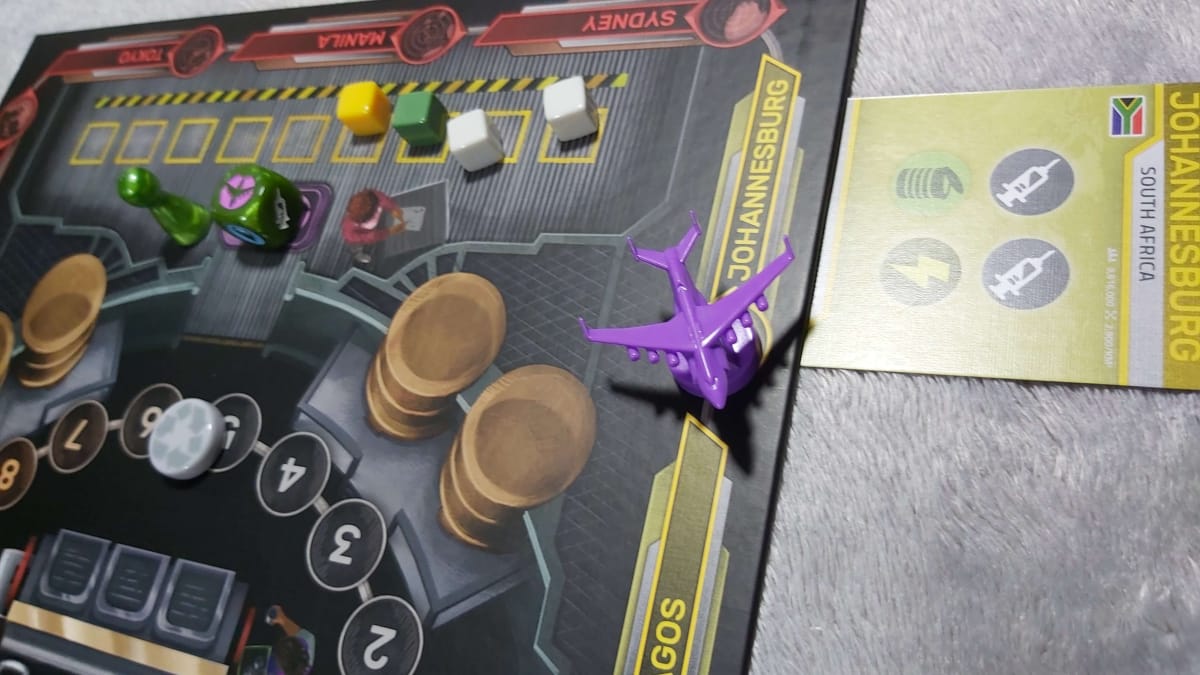
During the course of a game, each player is represented by a character. Apart from giving you a personality to imagine aboard the plane, these characters also provide you with different special abilities. Since you're assigned these at random, they can really change how well a game works out. If you lucked out and got the guy who makes the plane fly quicker, then you'll probably not do too badly. I have some mixed feelings about this particular mechanic. On the one hand, having characters randomly assigned does add a bit of RNG to the game, which is a bad thing at least as far as I am concerned. On the other hand, if you could just choose the characters with the best abilities in each game, there wouldn't be much point in playing more than once, as the characters are one of the two main ways in which Pandemic: Rapid Response derives some replay value.
The other way that the game keeps itself fresh is through the use of crisis cards. These cards are added into the game once the players have a firm grasp on how everything works. If the name 'crisis cards' doesn't give it away, these cards throw a cat amongst the pigeons. Every time the timer runs out, as well as placing a new city onto the board, you also flip over one of these crisis cards. They can do something as innocuous as forcing players back onto their starting spaces, or as potentially fatal as tying up a much-needed dice until the crisis card can be discarded. Once again Pandemic seems to trend towards high-difficulty. These crisis cards take an already stressful experience and then try and make it 400 times more stressful.
In general, if you're familiar with the world of Pandemic nothing visually presented here should be a surprise for you. The art on everything from the box to the cards to the board itself is very similar to the artwork of the other games. While it is nice to see some consistency amongst games in the same series, it is nothing special at all. The art literally only exists to serve the purpose of giving you something to look at while playing the game. It's still great art, but don't be expecting anything that will make you go 'wow'.
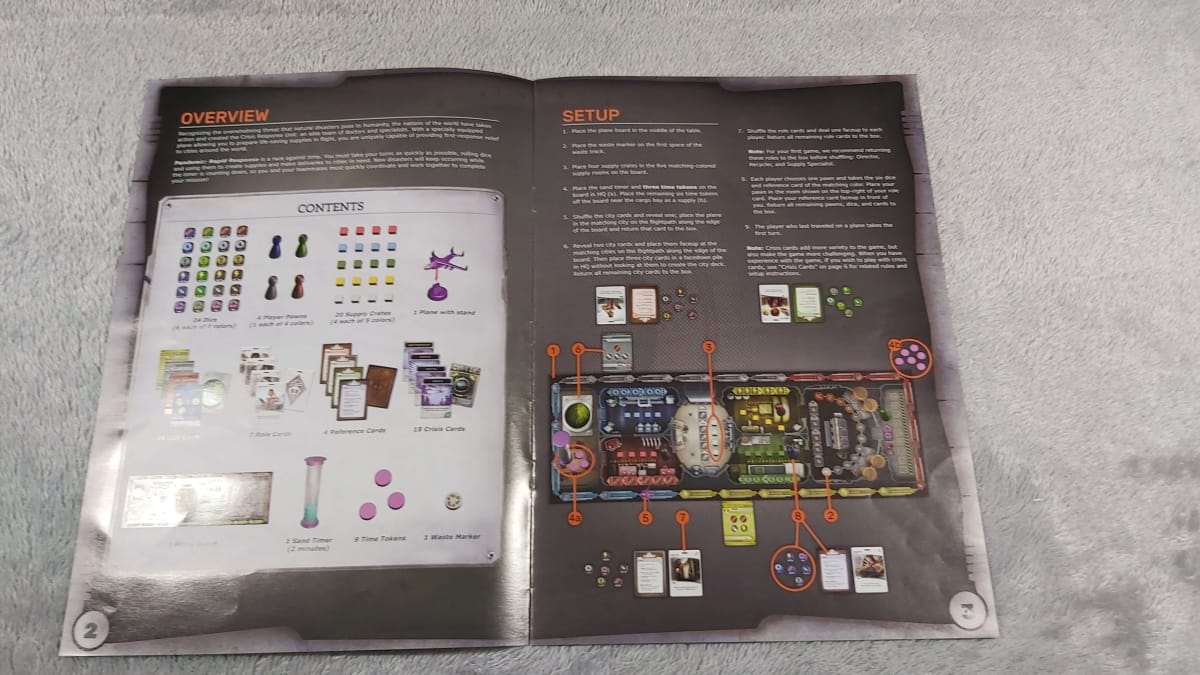
The Bottom Line:
Pandemic: Rapid Response fills a very specific need. It takes the theme of curing a viral plague and condenses it down into a game that can be set up and played in less than half an hour. It gives a similar feeling to the other games in the series while requiring much less time, space and explaining. If you've got friends with no patience for complicated games, or you just wish that Pandemic was quicker then you'll probably find an experience worth seeking out. If you've already played dice assigning games, pretty much just add a timer and a constant sense of impending doom and you've pretty much got the game down at that point.
Get This Game If:
You've always wanted a fast-paced Pandemic experience.
You like games with very simple dice assigning mechanics.
You want a game that makes you feel stressed and tense while you play.
You just want to complete your Pandemic collection.
Avoid This Game If:
You like a game that is more thought-out and slowly paces.
You are prone to heart attacks.
You've played many dice-assigning games in the past.
Review Summary
Have a tip, or want to point out something we missed? Leave a Comment or e-mail us at tips@techraptor.net
